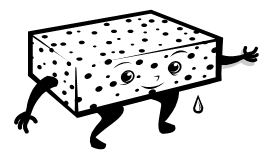Team:Virginia/Idea
From 2009.igem.org
| Line 14: | Line 14: | ||
[[Image:Idea.png|200px]] [[Image:Spongeman.PNG]] | [[Image:Idea.png|200px]] [[Image:Spongeman.PNG]] | ||
=Biosequestration= | =Biosequestration= | ||
| - | The use of microbial species for environmental remediation of heavy metals has been extensively studied. They can be used to sequester, precipitate or modify heavy metals to detoxify them. Two major inorganic cations of arsenic are both toxic to varying degrees. (See [[Team:Virginia/Problem#Toxicity|''Toxicity'']]) | + | The use of microbial species for environmental remediation of heavy metals has been extensively studied. They can be used to sequester, precipitate or modify heavy metals to detoxify them. Two major inorganic cations of arsenic are both toxic to varying degrees. (See [[Team:Virginia/Problem#Toxicity|''Toxicity'']]). |
Revision as of 01:57, 22 October 2009
edit
Biosequestration
The use of microbial species for environmental remediation of heavy metals has been extensively studied. They can be used to sequester, precipitate or modify heavy metals to detoxify them. Two major inorganic cations of arsenic are both toxic to varying degrees. (See Toxicity).
Storage and binding
Surveying evolved strategies for arsenic detoxification in bacteria shows that the most common mechanisms involve the efflux of arsenic ions. Our goal is to sequester arsenic, therefore to use a microbial chassis we must inhibit its efflux mechanism. However, storage of free arsenic ions in a cell will be toxic. A successful biosequestration strategy needs to also incorporate a binding mechanism that allows the cell to accumulate significant amounts of arsenic.
Arsenic Sponge
This engineered strain of E. coli is both deficient for the arsenic efflux pump gene and it also incorporates an arsenic binding mechanism using metallothioneins. This class of cysteine rich peptides can bind arsenic as well as other heavy metals, preventing it from interfering with cellular function. (Solubility?)
Escherichia coli uses the [http://ecoliwiki.net/colipedia/index.php/arsB arsB] ion transporter to specifically transport arsenite (As(III)) ions out of the cytoplasm. We obtained a single gene knock-out from the [http://ecoli.naist.jp/gb6/Resources/deletion/deletion.html Keio Collection] for arsB.
 "
"

